Sensory-Friendly Bedroom Design: One Room Challenge Week 8
Introduction to the Big Reveal
Welcome to the final week of the One Room Challenge Spring 2024! Week 8 marks the grand finale, and I'm honored to share the final reveal of a special project very close to my heart. This week, we (my family and I) completed a sensory-friendly bedroom design for my nephew, Logan, who is turning 13. Designing a space that caters to his sensory needs while also reflecting his budding personality has been an incredibly rewarding journey. I will always remember the memories that we made over these last eight weeks, which is most precious.
Transforming Logan's room was not just about aesthetics; it was about creating a sanctuary where he feels safe, calm, and inspired. This sensory-friendly bedroom design underscores the importance of thoughtful design, particularly for children and teens with sensory sensitivities. Creating a sensory-friendly room for teens is essential for their well-being.
Week 1 | Week 2 | Week 3 | Week 4 | Week 5 | Week 6 | Week 7 | Week 8 <- you’re here!
Catch up on previous weeks
In this article, I will walk you through the final stages of the project, highlight the fantastic products from our sponsors, and share how this transformation has positively impacted Logan's life.
But first, for those of you just tuning in, let me familiarize you with this fun non-competition home design challenge.
Table of Contents
Introduction
What is the One Room Challenge?
My motivation for participating in the One Room Challenge
Key milestones in Week 8
Sponsor Highlights
DesignFiles.co
Beddys.com
Sensory-Friendly Design Elements
Govee Glide Y Lights
Soft fabrics such as Beddy’s
Soundproofing
Calming Colors
Visual Progress
Impact on Logan’s Life
Conclusion
Comments
What is the One Room Challenge?
Founded by interior designer Linda Weinstein, the One Room Challenge (ORC) challenges participants to completely revamp a room in just six weeks. That's right, in just six short weeks, a room that was once outdated or lackluster can be transformed into a stunning space that reflects the personal style and vision of the designer.
But who can participate in this exciting challenge? The answer is simple: anyone and everyone! Whether you're a professional interior designer, a DIY enthusiast, or simply someone looking to spruce up their living space, the One Room Challenge is open to all. The event has gained a huge following, with thousands of designers and bloggers from around the world taking part each year.
So, how does the One Room Challenge work? Beginning in April and October, participants share their progress and design choices on a weekly basis through blog posts and social media updates. This not only allows for a sense of community and accountability, but it also provides inspiration and ideas for others looking to participate or revamp their own space.
The ORC has become known for its ability to bring together a diverse group of designers and creatives, all with a shared love for design and a drive to push their boundaries. It has also been praised for its focus on sustainability and encouraging participants to repurpose and reuse items in their designs. The event has even caught the attention of celebrity designers such as Nate Berkus and Genevieve Gorder, who have both participated in the challenge.
But the One Room Challenge is not just about transforming a physical space - it's about the journey and the impact it has on the participants. Many designers have shared their personal stories of how the challenge helped them overcome creative blocks, push their boundaries, and build their confidence. The One Room Challenge encourages participants to incorporate sensory-friendly decor and sustainable design practices. The event has also allowed for collaborations and partnerships between designers, brands, and online influencers, creating a supportive and inspiring community.
My Motivation for Participating in the One Room Challenge Spring 2024
I’ve watched on the sidelines for the last years years as other designers participated in this challenge. When my sister mentioned a year ago that she wanted to makeover her son’s bedroom, I immediately thought this would be a great project to do for the One Room Challenge.
Here are my reasons:
I love helping family and friends with their homes, even though many say to never work with family and friends. I keep my expectations low as to what I get out of it, and focus on how I can make their lives better.
My nephew has sensory sensitivity, which I originally misunderstood as Sensory Processing Disorder. I knew I could help design an amazing room that catered to his sensitivities that they otherwise might not have thought about.
As a micro-influencer who really just wants to monetize her blog rather than become insta-famous, I thought that this would be a great way for me to dip my toe into the collaboration process. Inclusive design and sensory needs has always been a passion of mine, and this project allowed me to explore it further.
Key Milestones in Week 8
Achieving the perfect blend of functionality and beauty required meticulous planning and execution. Here's a detailed look at the key milestones we hit during the final week:
1.Installation of Govee glide y lights
Lighting plays a crucial role in creating a sensory-friendly bedroom design. The Govee Glide Y lights are a game-changer for Logan's room. These lights offer customizable settings, allowing us to adjust the brightness and color to suit Logan's mood and sensory needs. Whether he needs a bright light for studying or a calming glow for relaxation, the Govee Glide Y lights can be tailored to provide the perfect ambiance.
The installation process was straightforward, and the lights can be controlled via a smartphone app. This feature is particularly beneficial for Logan, as he can easily adjust the lighting without having to get up from his desk or bed. The lights also have preset modes, including a soothing "night" mode that helps Logan wind down before bedtime.
Installation of the ceiling light: Providing ample overhead lighting for the room.
Addition of a floor lamp
The new floor lamp provides soft, ambient lighting, perfect for reading and relaxation. Placed next to Logan's desk, the lamp adds a cozy yet futuristic element to the sensory-friendly bedroom design.
Late night Amazon shopping: For last-minute essentials and sensory-friendly decor.
Finishing touches to the decor
Adding the finishing touches was perhaps the most enjoyable part of the project. Incorporating personal items into the decor was essential to make the room feel uniquely Logan's, and giving him a sense of ownership and pride in his space.
Celebrating Logan’s 13th birthday: Marking the completion of the project.
Sponsor Highlights
DesignFiles.co
Watch me create the concept board for the latest revisions to the design.
As a residential virtual online interior designer, I know that creating a successful design project is no easy feat. That's why I turned to DesignFiles.co for support, and it proved to be an invaluable tool.
This all-in-one platform helped me keep the project on budget, track orders, and create detailed concept boards. The ability to visualize different design options and ensure everything came together seamlessly was crucial for the success of this sensory-friendly bedroom design.
With DesignFiles, I could create a digital vision board that included all the elements we planned to incorporate into Logan's room. This helped in making informed decisions and staying within our budget. The platform's user-friendly interface allowed me to share the concept board with Logan and his parents, ensuring everyone was on the same page. The ability to plan a sensory-friendly bedroom design was made easier with the detailed tools available on DesignFiles.co.
Watch the video below to see how I used DesignFiles.co to bring this sensory-friendly bedroom design to life:
Beddys.com
Beddy's zippered bedding was a fantastic addition to Logan's room. This all-in-one zippered bedding simplifies the process of making the bed and ensures everything stays in place. The soft fabrics and tactile elements are ideal for Logan's sensory needs and integral to the sensory-friendly bedroom design.
Beddy's bedding features a unique design where the top and bottom sheets are sewn together, eliminating the need for multiple layers. This not only makes the bed easy to make but also ensures that everything stays in place throughout the night. For Logan, this means fewer disturbances and a more restful sleep.
Check out the video below to see the Beddy's bedding in action, showcasing its sensory-friendly features:
The Beddy’s bedding's soft, minky interior is gentle on Logan's skin, providing a comfortable and soothing texture. The easy-to-use zippers allow Logan to quickly and effortlessly make his bed, fostering a sense of independence. Additionally, Beddy's offers a variety of styles and colors, allowing us to choose a design that complements the overall theme of Logan's sensory-friendly environment.
Sensory-Friendly Design Elements
Creating a sensory-friendly environment was a top priority in this project. Each design element was carefully chosen to enhance comfort and reduce sensory overload. Here’s how each element contributes to a successful sensory-friendly bedroom design:
1.Govee Glide Y Lights
The Govee Glide Y lights are a standout feature in Logan's room. These lights offer various settings to adjust brightness and color, creating a calming atmosphere. The ability to dim the lights or change their color helps Logan regulate his sensory input, making the room adaptable to different activities and moods.
The lights can be set to a warm hue for relaxation or a cool tone for studying and playing. The dynamic modes, such as the "rainbow" mode, add an element of fun and engagement, which Logan loves. The remote control and smartphone app make it easy for him to customize the lighting according to his needs.
2.Soft Fabrics
Soft fabrics play a crucial role in providing tactile comfort. The bedding and furniture are covered in soft, comfortable fabrics that offer a soothing tactile experience. The Beddy's bedding, with its plush minky interior, is particularly beneficial for Logan, who finds the soft texture calming.
We also incorporated soft throw pillows and a cozy rug, which add layers of comfort and warmth to the room. These elements create a welcoming environment where Logan can relax and feel at ease.
3. Soundproofing
To create a peaceful environment, we focused on soundproofing. Adding thick curtains helps block out external noise, while the rug reduces echo and absorbs sound within the room. These measures ensure that Logan's room remains a quiet sanctuary where he can focus and relax.
4. Calming Colors
The color palette of Logan's room was carefully selected to create a calming and harmonious atmosphere. We chose soft, muted tones of blue and green, which are known for their calming effects. These colors help create a serene environment, reducing stress and promoting relaxation in the sensory-friendly bedroom design.
Big Reveal of our Teen Bedroom Makeover for the One Room Challenge Spring 2024
Seeing the transformation from start to finish is incredibly satisfying. The room evolved from a cluttered, chaotic space to a well-organized, sensory-friendly haven. The use of soft lighting and calming colors contributed significantly to the overall ambiance. Below are the before and after photos along with 3D renderings to show the transformation from every angle:
The before photos show a room that was cluttered and lacked cohesion. In contrast, the after photos reveal a space that is not only functional but also visually appealing. The 3D renderings provide a detailed view of the design, highlighting the thoughtful placement of furniture and decor.
Here’s a quick video of the bedroom tour: You need to see what happens when it’s dark in the room!
BEFORE
AFTER
Impact on Logan’s Life
This room makeover has had a significant impact on Logan’s life. He now has a space where he feels comfortable and safe, which is essential for his well-being. The new sensory-friendly bedroom design has provided him with a sanctuary where he can retreat from the stresses of daily life and recharge.
While I was blowing up his birthday balloons yesterday, I sat in his desk chair and watched the Govee Glide Y lights send ripples of blue. I was calmed and rejuvenated after working on his bedroom for four hours completing the finishing touches. I can only imagine how calming it will be for Logan.
Logan started sleeping in the room about three weeks ago, and absolutely loves all the new changes. He couldn’t wait to invite friends over for a pajama party. (Do boys do pajama parties? LOL)
The project has also sparked Logan's interest in interior design. He was actively involved in the process, from choosing the colors to selecting the decor. This engagement has given him a sense of ownership and pride in his new room. Logan is now more interested in how spaces are designed and is even considering how he might want to redesign other areas of the house.
Additionally, this project has strengthened our family bond. Working together on this room allowed us to spend quality time and understand Logan's needs better. It was a wonderful experience that brought us closer and helped us appreciate the importance of creating a supportive and nurturing environment for Logan. Designing a sensory-friendly bedroom for teens can have a profound impact on their daily life and well-being.
Conclusion
The final reveal of Logan's sensory-friendly bedroom design is a testament to the power of thoughtful design. Every element, from the Govee Glide Y lights to the Beddy's bedding, was chosen to create a space that is both beautiful and functional. This project highlights how design can significantly impact the well-being of individuals, especially those with sensory sensitivities.
If you're considering a room makeover or are interested in incorporating sensory-friendly design elements, I encourage you to explore the products and design elements highlighted in this project. Thoughtful design can transform any space into a sanctuary that promotes comfort, relaxation, and happiness.
For a detailed journey of this project, check out the links to previous weeks' articles below:
Week 1 | Week 2 | Week 3 | Week 4 | Week 5 | Week 6 | Week 7 | Week 8
Would you like me to put together a customized design for you?
Let’s schedule a free, no obligation, discovery call.
Blog Categories
Reader Favorites
By Appointment:
Design Consultations Locally and Remotely Worldwide
Contact me to talk about your home decor challenges!
Affiliate Disclaimer
Copyright Act of 1976 Section 107 Fair Use Disclaimer
Most Popular Articles
Say Hi on Instagram
More Inspiration







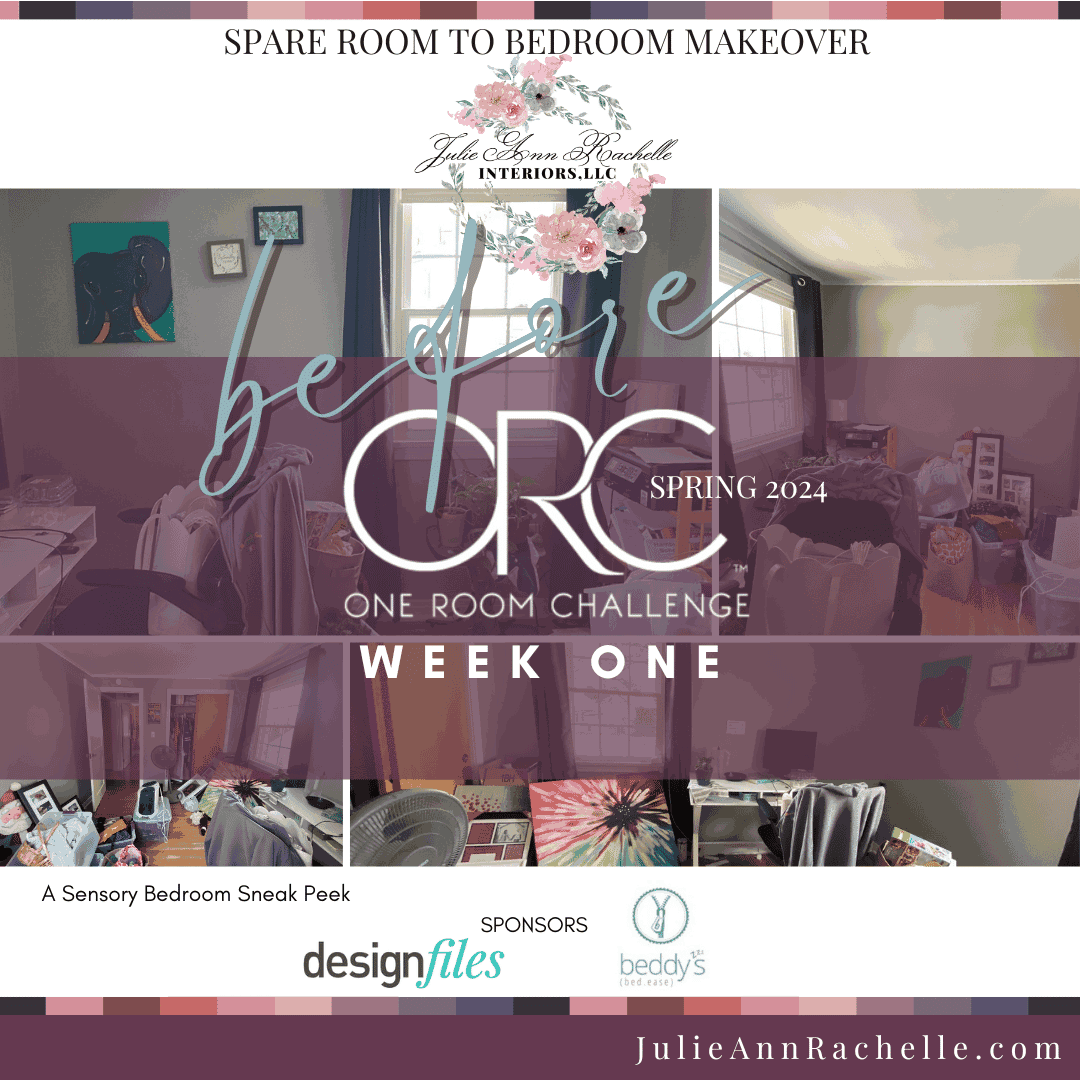












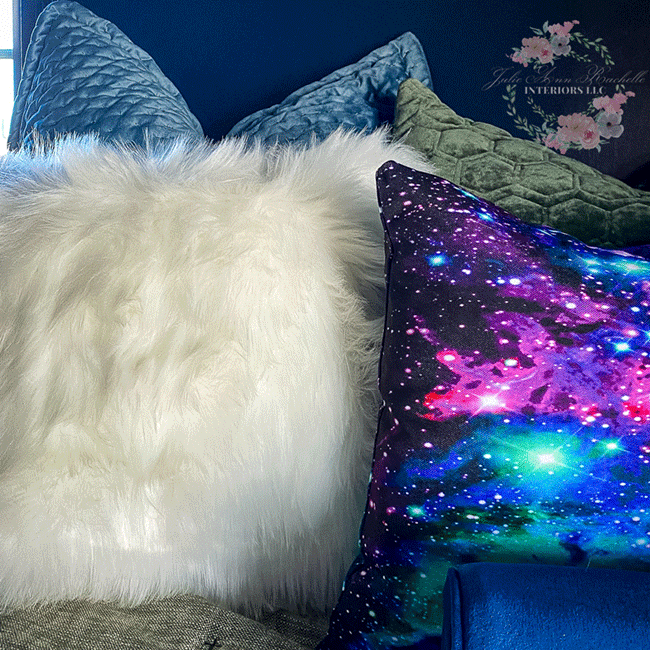














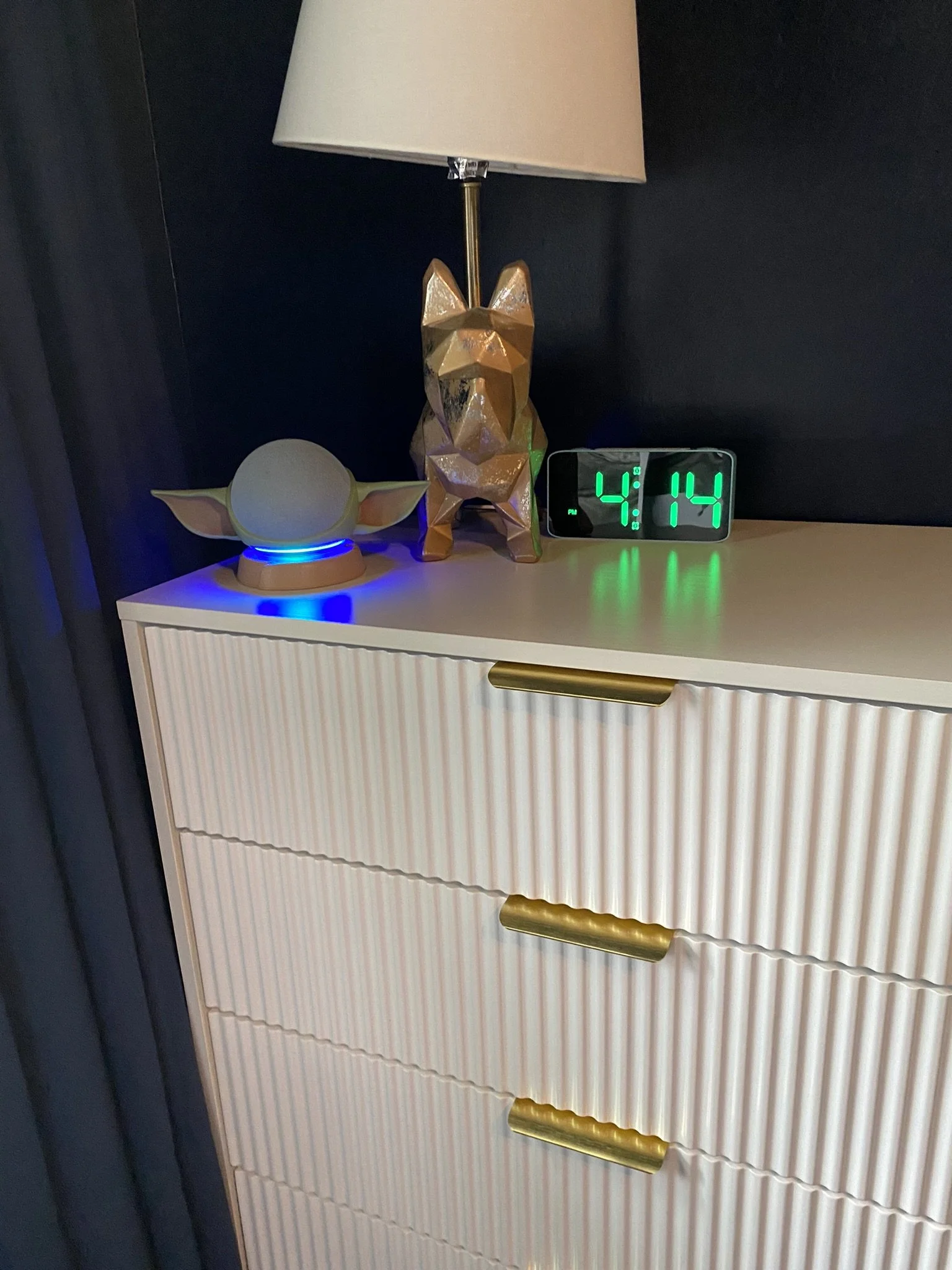

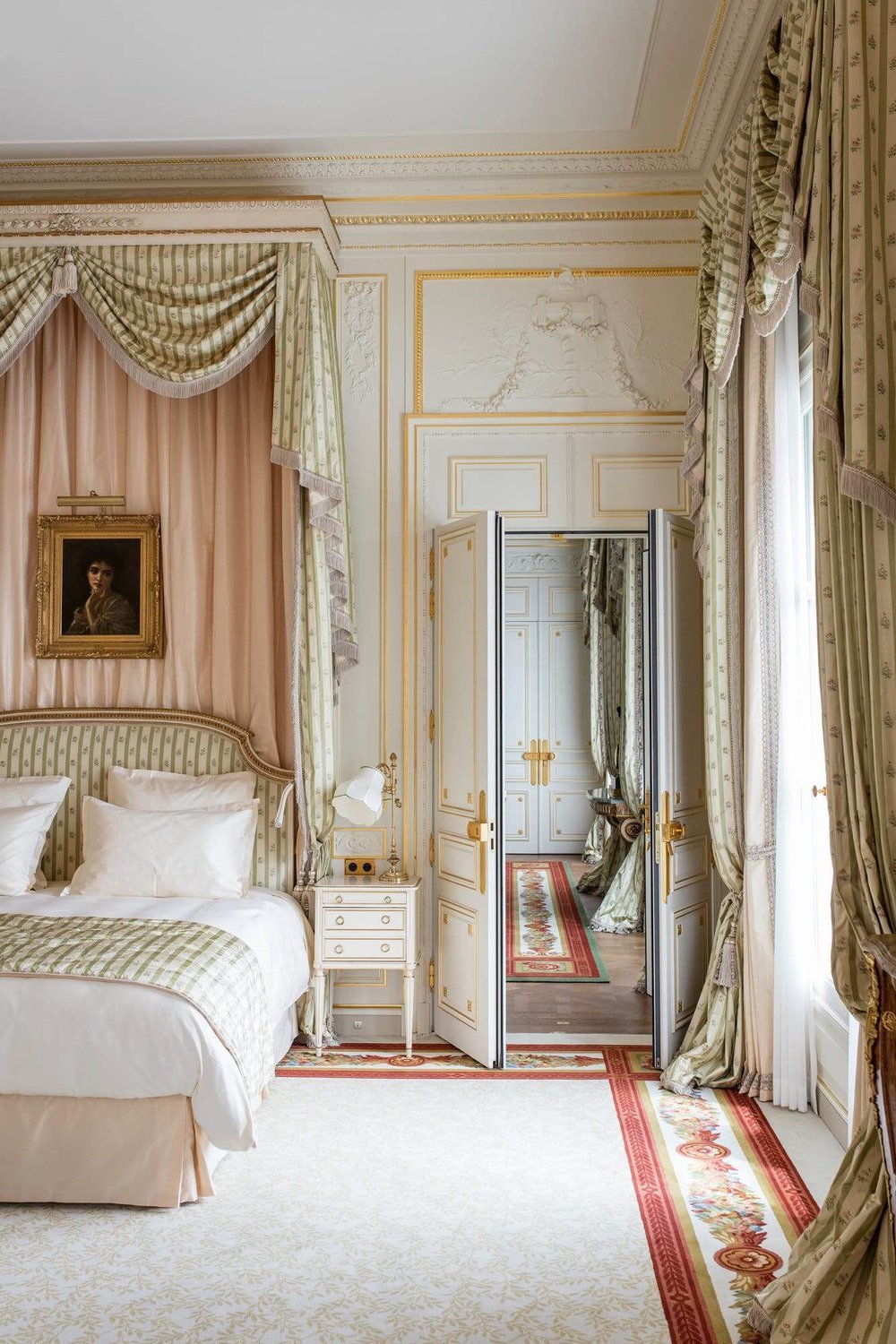


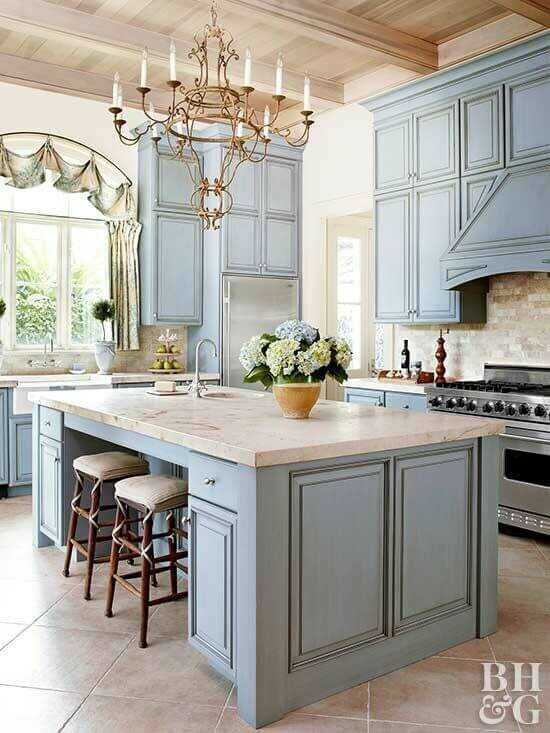














Welcome to the final week of the One Room Challenge Spring 2024! I'm thrilled to share the reveal of a special project close to my heart: a sensory-friendly bedroom design for my nephew, Logan, who is turning 13. This journey has been about more than aesthetics; it was about creating a sanctuary where Logan feels safe, calm, and inspired. In this article, I'll walk you through the transformation process, highlight key design elements, and share the positive impact this space has had on Logan's life. Join me in celebrating this meaningful makeover!